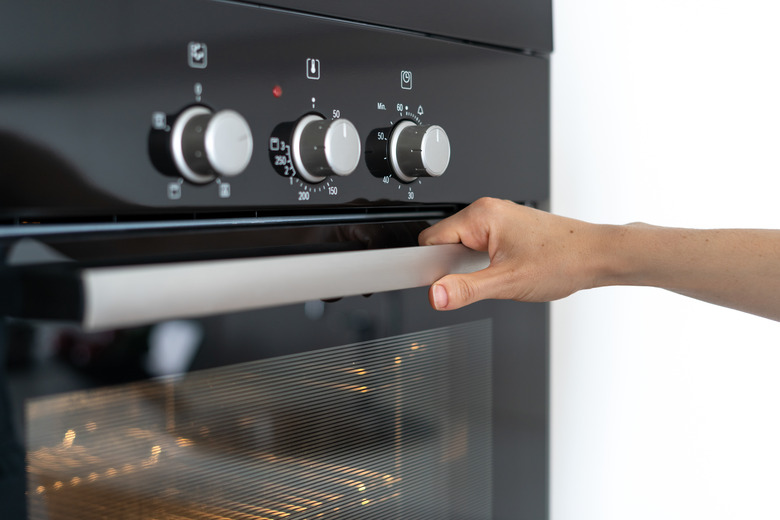How To Light An Oven Pilot Light On Old Stoves
Modern gas stoves use a piezoelectric igniter to generate a spark that ignites your gas. Older models use a pilot light in the oven, and another for each burner as their method for lighting the flame. The pilot is typically shut off before the stove is moved or installed or in seasonal situations where it might not be used for an extended period. It can also go out on its own occasionally. Relighting one isn't difficult, but there are some safety rules you'll need to observe.
Pilot Light in Your Oven
Pilot Light in Your Oven
If you grew up with newer-style gas stoves, and you're used to the click of modern igniters, pilot lights need a bit of explanation. Stoves with pilot lights have a main valve that provides gas to the burner when you turn the nob and then a secondary, smaller valve that feeds a very fine stream of gas through a tube to a suitable spot near the side of the burner.
The amount of gas used is minimal, just enough to maintain a flame of the size you'd see from a tiny candle. When you turn on the burner's main valve, this small flame is enough to ignite the main flame and start baking. Because this uses gas continuously, it's less energy-efficient. It's also less safe than the modern igniters, because if the pilot light goes out, a potentially explosive quantity of gas can build up.
Relighting After a Planned Shutdown
Relighting After a Planned Shutdown
If the stove was deliberately shut down, either in a seasonal-use situation or in preparation for moving and re-installing, the process is relatively straightforward. Once the stove is re-installed, check that all of the stove's knobs are turned to their "off" positions. Sponge soapy water around the valve fittings on the gas feed line to check for leaks (if you see bubbles, shut off the gas and call a professional to fix it).
Turn on the gas at the feed line's main valve. Open the oven door, removing the racks if necessary, for easy access to the pilot. The oven knobs on some stoves have a specific position for lighting the pilot; others require you to press the knob to start the gas. The manufacturer's website or toll-free help line can help you determine the correct option, or you can look for a suitable online video, such as this one from PremierRanges. Once the gas is flowing, reach in with a long barbecue lighter or fireplace-length match to ignite the flame.
Relighting the Pilot Light
Relighting the Pilot Light
If the pilot light is out on the stove and it smells like gas, you'll need to take a few extra precautions. The actual process of lighting the pilot remains the same, but before you start you must allow any accumulated gas to dissipate.
First, be sure that the gas smell is confined to the stove and not coming from anywhere along the line feeding into the stove. If you're uncertain, sponge soapy water onto the feed line and watch for bubbles. If you see any, shut off the master gas valve and call your gas company, then wait outside until a crew arrives.
If the smell is confined to the stove, open your oven door and allow any accumulated gas a few minutes to disperse. Aiming a fan into the oven can speed the process. When the smell has dissipated, relight the pilot normally.
Pilot Won't Stay On
Pilot Won't Stay On
Ordinarily relighting the pilot is straightforward. However, if the pilot won't stay on or fails to light the oven, you may need to do additional troubleshooting or bring in a professional to service your oven.
